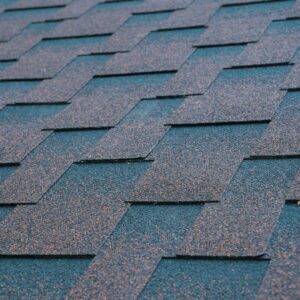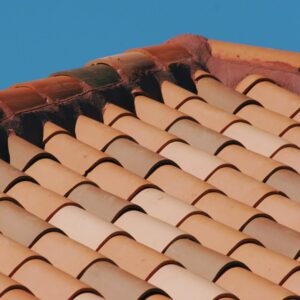If you live in the Midwest, you already know: the weather doesn’t play around. From blistering summers and freezing winters to sudden hail storms and heavy snow, your roof takes a beating all year long. That’s why choosing the right roofing material for Midwest homes isn’t just a design decision, it’s about protecting your investment, maintaining energy efficiency, and avoiding expensive repairs.
In this guide, we’ll explore the best roofing materials for the Midwest, along with their pros and cons, average lifespans, and key performance benefits. Whether you’re planning a full roof replacement or building a new home, this article will help you make an informed choice.

Why Roofing in the Midwest Is Unique
Midwestern weather is famously unpredictable. Your roof needs to handle:
- High winds and tornado threats
- Hail and flying debris
- Heavy snow loads
- Temperature swings from below zero to triple digits
- Ice dams and moisture buildup
Choosing a roofing material that stands up to these challenges is crucial, not just for your home’s structure, but also your comfort and energy bills.
Top Roofing Materials for Midwest Weather

1. Metal Roofing
Best for: Long-term durability, snow shedding, and energy savings
Average lifespan: 40-80 years
Advantages:
- Withstands strong winds, hail, and heavy snow
- Fire-resistant (Class A fire rating)
- Reflective surface helps reduce heat absorption
- Low maintenance
- Eco-friendly and often made from recycled materials
Disadvantages:
- Higher upfront cost
- Can be noisy during rain or hail without proper insulation
- Metal expands/contracts with temperature changes, requiring proper installation to avoid fastener loosening
Metal roofing continues to grow in popularity across the Midwest because of its performance in extreme weather. While the cost is higher than asphalt, its durability and energy efficiency make it a smart long-term investment.

2. Asphalt Shingles
Best for: Affordability and easy maintenance
Average lifespan: 20-30 years
Advantages:
- Most budget-friendly option
- Available in a wide range of colors and styles
- Quick and easy to install or repair
- Impact-resistant shingles available for hail protection
Disadvantages:
- Shorter lifespan compared to metal or synthetic roofs
- Prone to granule loss and curling over time
- Less energy-efficient than metal or white membrane roofing
Asphalt shingles remain the most commonly used roofing material in the Midwest. Modern options now include impact-resistant versions that better stand up to hail, making them a more durable option without the higher price tag.
3. TPO Roofing (for Flat/Low-Slope Roofs)
Best for: Energy efficiency on commercial or flat-roof buildings
Average lifespan: 20-30 years
Advantages:
- Reflects UV rays to reduce cooling costs
- Durable and puncture-resistant
- Heat-welded seams provide excellent leak protection
- Cost-effective installation for flat roofs
Disadvantages:
- Not suitable for steep-sloped residential roofs
- May need periodic maintenance to prevent membrane degradation
For flat or low-slope roofs, particularly in commercial settings, TPO (Thermoplastic Polyolefin) roofing is one of the most energy-efficient and weather-resistant options available in the Midwest.
4. Synthetic Roofing (Rubber, Plastic, or Polymer Composites)
Best for: Mimicking premium looks without the maintenance
Average lifespan: 40-50 years
Advantages:
- Made to resemble slate or wood without the weight or fragility
- Resistant to impact, UV, and moisture
- Lightweight and easier to install
- Often composed of recycled materials
Disadvantages:
- Higher initial cost
- May not be as readily available as asphalt or metal
Synthetic roofing is a great option for homeowners who want curb appeal with durability. It’s perfect for Midwestern homes that experience hail, snow, and rapid freeze-thaw cycles.

5. Slate and Tile Roofing
Best for: High-end homes focused on longevity and aesthetics
Average lifespan: 50-100 years (natural slate)
Advantages:
- Extremely durable and weather-resistant
- Class A fire-rated
- Adds significant property value and visual appeal
Disadvantages:
- One of the most expensive roofing materials
- Heavy, may require structural reinforcement
- Fragile underweight (difficult to walk on)
While not as common in the Midwest due to cost and structural weight concerns, slate and tile are an option for homeowners willing to invest in a luxury, long-lasting roof.
Other Key Considerations
Roof Slope Matters
- Steep-slope roofs: Best suited for asphalt shingles, metal panels, or synthetic tiles. These materials shed water and snow effectively.
- Flat or low-slope roofs: Require membrane systems like TPO or EPDM to prevent water pooling.
Energy Efficiency
- Reflective roofs (metal or white TPO) reduce summer cooling costs.
- Proper insulation and attic ventilation also prevent winter ice dams and improve indoor temperature regulation.
Maintenance and Longevity
- A more expensive material with less upkeep (e.g., metal or synthetic) may save you thousands in long-term repairs.
- Always schedule regular inspections, especially after severe storms.

How to Choose the Right Roof for Your Home
Still unsure which material to choose? Ask yourself:
- What’s my budget now, and long-term?
- How long do I plan to stay in this home?
- Do I want a classic or modern look?
- How often do I want to deal with roof repairs?
You don’t have to make the decision alone. A professional Midwest roofing contractor can inspect your current roof, discuss your goals, and recommend the best material for your climate, slope, and budget.
Final Thoughts
Choosing the best roofing material for your Midwest home is about more than looks, it’s about performance, protection, and value. While asphalt shingles are a go-to for budget-conscious homeowners, metal and synthetic options are well worth considering for their longevity and resilience.
If you’re ready to explore roofing options that stand up to Midwest storms, snow, and sun, contact your local roofing experts today.
Need help picking the perfect roof?
Call Ryan Construction Systems Inc. today for a free inspection and personalized quote!



